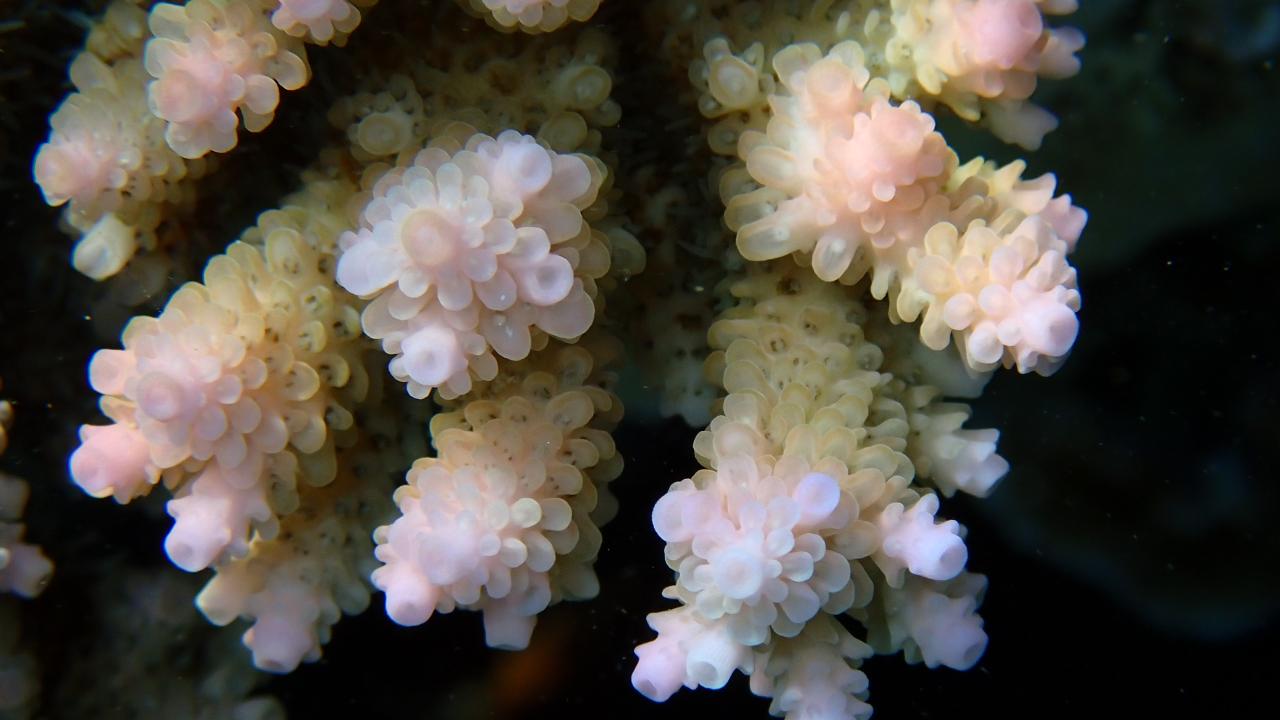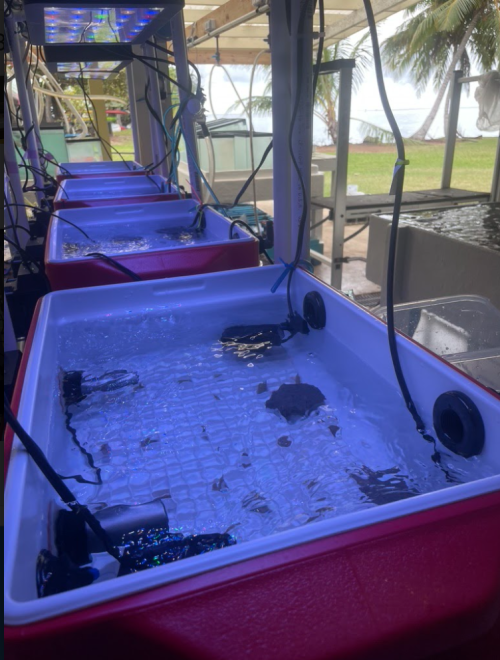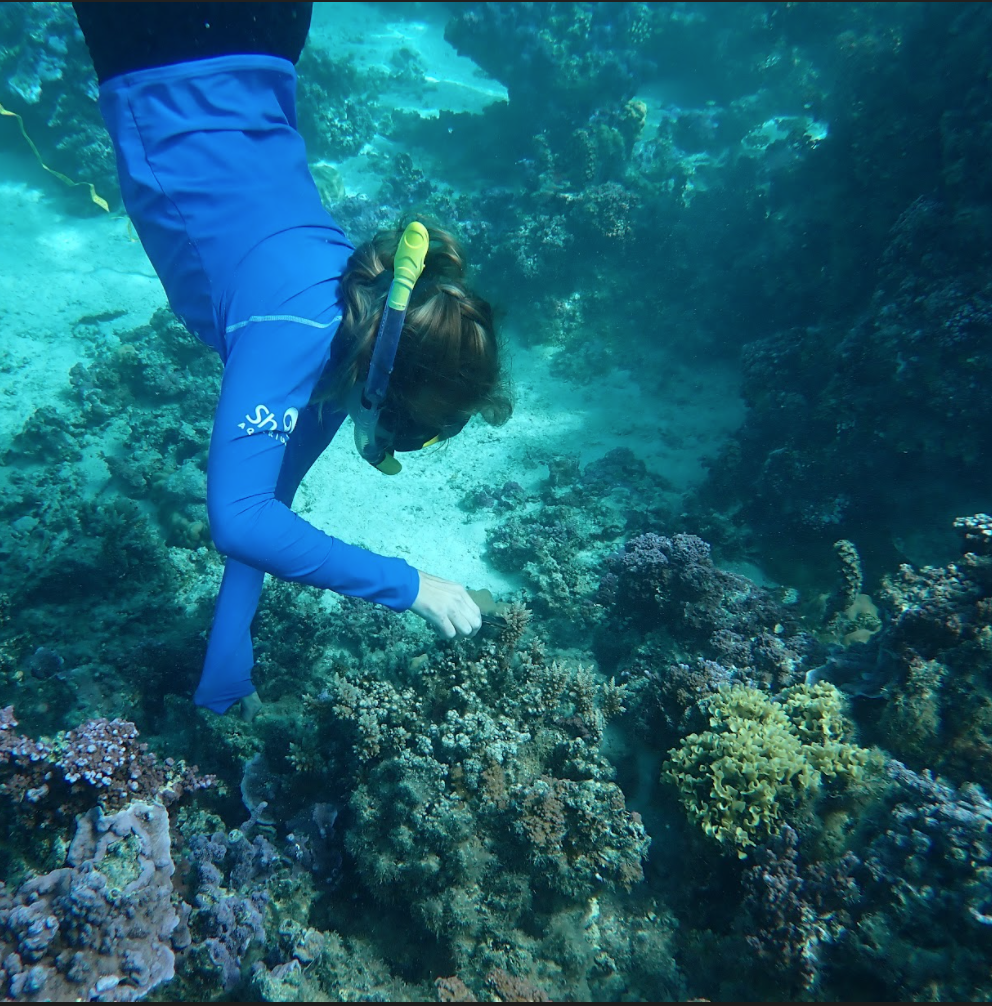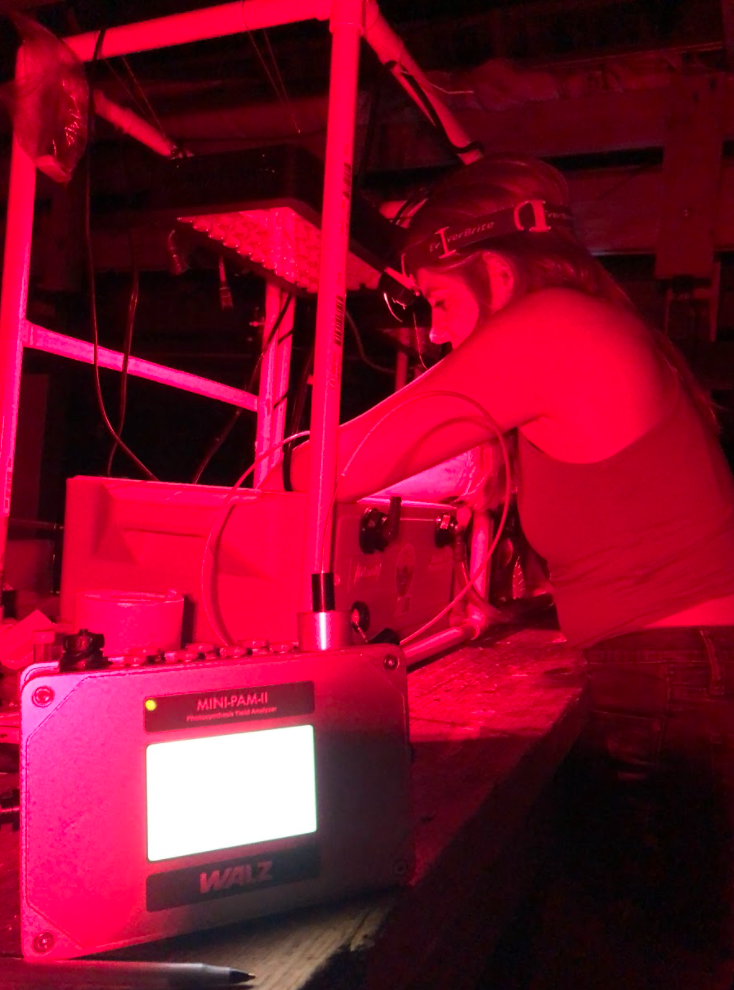
Coral’s fight for climate survival, explained in DNA
A look into Dr. Rachael Bay’s investigation in coral genetics
Life finds a way.

The story of evolution is one of the struggles in an ever-changing environment. Anthropogenic climate change–climate change caused by human activity–poses a bleak future for the survival of earth’s contemporary biodiversity. This is particularly true for corals, marine organisms capable of building massive and complex reef structures which, globally, host over 25% of marine biodiversity. But they won’t fall without a fight: corals still struggle to survive and adapt no matter how much the odds may be stacked against them. Dr. Rachael Bay, an Assistant Professor of Ecology and Evolution at UC Davis, has spent much of her career investigating how corals adapt and acclimate to environmental changes. Her research, which is featured in the textbook Life: The Science of Biology (currently in use at UC Davis), continues to uncover the complexity of how corals may be able to withstand climate change by tackling an invisible yet principle key–their DNA–to address some of these pressing ecological concerns arising from the cellular and molecular scales of life.
Coral bleaching and resilience
The predominant threat to corals today is bleaching. Corals maintain a symbiotic relationship with algae, which provide their main food supply and dazzling coloration. But under stressful temperatures, these algae can become toxic to coral cells and cause the coral to expel the algae, causing the coral colony to appear white. Unfortunately, this short-term defense also cuts off the coral’s food supply, spelling certain death by starvation if conditions do not restabilize in time. With the persistent rise of ocean temperatures due to climate change, restoration of symbiosis is increasingly impeded. Mass-bleaching events are occurring worldwide and coral reefs are steadily shrinking as a result. This can have wide-reaching impacts on the ocean ecosystem as a whole. Declining reefs threatens the survival of millions of species that depend on them for nourishment and shelter. This includes millions of people relying on coral reefs’ resources. If these resources continue to diminish, island and coastal communities risk climate displacement.
But over the past few decades, scientists have discovered that some corals aren’t bleaching during mass-bleaching events. The enigma is that this is not species or habitat specific. “It’s kind of common to see two coral colonies right next to each other where one bleaches and the other doesn’t, and they’re the same species and the same size,” Bay explains, “so the fundamental question that we are interested in is why does this happen.” The lack of clear visible patterns to explain why some corals bleach and others don’t led scientists to suspect that the answer lies at the molecular level of coral biology.
No one road to heat resilience: logging a genetic haystack

Research into bleaching resistance has been met with the struggle of navigating the complex ways corals cope with environmental stress. Heat resilience arises through heat-adapted genes, but scientists have found this trait to be polygenic. Polygenic means that a coral’s heat resilience is not linked to any single gene but to many genes, which can vary across coral species. Furthermore, resilience itself isn’t always strictly due to heritable genetic adaptations, but can be developed through a process called thermal acclimation. This is when surviving corals previously exposed to elevated temperatures can “remember” the stress and condition themselves to withstand future heat waves. Thermal acclimation is connected to how certain genes are expressed, and previous studies discovered this relationship to vary between corals despite similar genetic sequences. This implies that even if two coral colonies have similar genetic sequences, which genes are active and dormant can differ. So rather than finding a needle in a haystack, scientists have to sort a haystack within a haystack.
Bay recounted this situation in an experiment conducted during her graduate studies, featured in the Life textbook, on two lagoons–one with a stable cool temperature and the other a back-reef that experienced regular hot swings–harboring healthy corals in American Samoa. The back-reef pools had higher heat resilience, found by testing the thermal tolerance of its corals via placing samples in a portable beer cooler-made rig that subjects them to varying temperatures. But a genome-wide association study, which looks for whether certain coral characteristics are linked with certain genes in the DNA, revealed that the thermal tolerance was developed through a combination of thermal acclimation and pre-existing adaptation related to over 100 locations in the genome.
A secret weapon in epigenetics?

But there may be a third player in the polygenesis of heat resilience: the epigenome. The epigenome is a molecular signature of DNA-organizing proteins and chemical tags that mark the DNA and influence gene expression. It is believed to change more rapidly than mutations–the cause of DNA sequence variation–and is influenced by environmental cues. Due to this, there is interest in investigating how they influence thermal tolerance, how long these influences last, and whether they are heritable.
What Bay seeks to uncover, now as an Assistant Professor leading the Bay Lab, is how environmental mechanisms affect which method of developing thermal tolerance corals employ. Leslie Guerrero, a graduate student in the Bay Lab, is spearheading an ongoing research project that focuses on pinpointing the molecular basis for thermal acclimation. Leslie suspects that the main driver is in the epigenome, which will in turn translate to lasting generational resilience. “My hypothesis is that epigenetic mechanisms … are key components for thermal acclimation,” she explained, “I suspect that over evolutionary time, increased thermal tolerance and the associated epigenetic signatures become fixed due to the enhanced fitness resulting from historical thermal acclimation.”

To test this hypothesis, Leslie is currently working on a study alongside fellow graduate student Brooke Benson and then-undergraduate (now junior specialist) Camille Rumberger. Together, they tested the thermal tolerance of five species of corals within the genus Acropora. Acropora is a highly diverse genus known for being sensitive to heat fluctuations, making its species ideal for this comparison. This took the three students on a month-long field expedition to the reefs in Moorea, French Polynesia. Being her first field season, it was a step outside Leslie’s usual comfort zone in Davis. While faring rainy winter weather and navigating challenging waters, the group snorkeled every morning to collect coral samples. These samples were then tested in the beer cooler rig–then improved with an Arduino system and named the Coral Bleaching Automated Stress System (CBASS)–throughout the day, and each sample’s thermal response data was collected in the evening. As with most field expeditions, things didn’t always go perfectly as planned–Leslie recalled experiencing hiccups that pushed back trial counts from thirty to twenty-four. Nevertheless, her lab mates remained positive and determined, successfully working through the challenges through open communication and responsibility. The group also preserved tissue samples for each collected coral to bring back to Davis. There, Leslie hopes to sequence their DNA and RNA and compare with the thermal tolerance data from the field to find out what’s happening ‘under the hood.’
Genes and climate change: how conservation fits in
Though encoded on microscopic DNA, the interwoven peculiarities of coral polygenesis between acclimation, genetics, and epigenetics paints a wider picture of our climate change consequences. Exploring how and which corals employ different climate defense mechanisms under specific climate conditions increases our ability to predict how these animals will respond, evolve, survive, or perish at the molecular level over time, and provide a model for other organisms undergoing similar struggles against climate change. For corals specifically, Bay hopes that computer simulations can use her data to model how resilient and non-resilient corals inherit their traits over time against climate conditions to estimate which and when populations will decline, ultimately pinpointing vulnerable corals that desperately need conservation protection.

How YOU can get into research
Key Takeaways
- Some corals are surviving deadly mass-bleaching events through genetic traits that resist stressful temperatures. However, which genes and gene expressions are behind this can vary between corals.
- Uncovering the diverse ways corals develop and spread heat resilience can open new pathways for coral conservation and improve our ability to understand and predict future evolution for other animals.
- A researcher’s very first project is often the hardest to conceive and complete, and finding inspiration by getting involved and developing a growth mindset are key to this process. Completing that first project opens the barrier to new ideas.
Undergraduate research is an integral component of UC Davis education, but many students often feel stuck on finding the right topics or asking the best questions. Fortunately, Bay has some advice. “The hardest paper in a new system is the first one because you’re learning about the system … it takes a bit of leg work to feel comfortable enough [and] when you do, questions sort of roll in.” The most effective way to achieve that first task is by assisting in someone else’s project, where you can learn about various systems and the methods available to explore them and eventually gain enough experience to build your first paper. “Once you’re writing that first paper you’ll find things in the data that make you wonder something else, so that’s the sort of easiest way that ideas come along.” But the path to that first paper will be challenging and requires a positive growth mindset. Leslie advises it can be nurtured by picking up a hobby that takes you outside your comfort zone, which will “always serve as [a] model for how the process of learning and growth looks to you, as an individual, that you can reflect on when you are faced with challenging learning and growth circumstances.”
If you’re unable to join a desired lab, you can also regularly attend lab meetings and seminars to listen to discussions and data presentations for inspiration. Getting involved in some way or another will always push undergraduates forward towards the scientific lightbulb, and the university’s vast resources of faculty and labs are there to guide you in that journey!
About the Author:
David is a first-year student studying marine and coastal sciences. Driven by a lifelong fascination with ecosystems and natural history, he hopes to dedicate his undergraduate years to research and promoting awareness about current oceanic issues alongside his studies. He also likes to draw and build Minecraft worlds with friends.
